Objectives:
- Provide educational material on sustainable management
- Develop sites demonstrating shoreland vegetation
- Document revegetation efforts and success
- Monitor and collect data to assess long-term water quality and habitat improvements
- Examine public perceptions of sustainable landscapes
Why embrace sustainable management and native revegetation?
Sustainability means reducing chemical inputs and restoring native vegetation. We can create landscapes in our back yards which are sustainable. Native vegetation protects water quality and fish habitat, controls erosion, conserves native plant and animal diversity, and gives us beauty, privacy and a low maintenance landscape.
Native Shoreland Revegetation Demonstration Sites
These three sites were originally conventional turf grass and needed regular mowing, fertilizing and weeding. In summer of 1998, these demonstration sites were converted to sustainable landscapes. Naturalized shoreland will evolve here over time.
Restoration Timeframe:
Year 1: April - June 1998
Final Site design was agreed upon. Turf grass was killed using herbicide in spring and hardwood mulch was applied to reduce weed growth. Erosion control fabric was used in wetter areas. Wave breaks in water reduce effects of wave disturbance on plant survival. Several community groups helped plant approximately 3,500 native plant seedlings and shrubs.Year 2: 1999
Perennial plants will mature and flower. Mulch will decompose and spaces between plants will begin to fill in. Shoreline aquatic vegetation will spread.Year 3: 2000 and beyond
A mature prairie will become established attracting birds, and beneficial insects which control insect pests. Aquatic plants will stabilize the shoreline and provide habitat for fish, water birds, and aquatic insects.
Shoreland Revegetation
Getting Started
- Plan landscaping with protection of water quality in mind. A vegetated buffer about 30 feet deep along your lakeside will help filter out pollutants and sediment before they enter your lake. Plant a buffer strip of diverse native plants between lawn and water.
- Select native perennials, trees and shrubs which are hardy and require little or no fertilizers, herbicides or pesticides. Purchase plants or seeds from nurseries that get seed from local seed stock. These plants will be better adapted to your area.
- Put each plant into the place where it will grow best. Uplands can be planted in sun with prairie and plants and shade with native woodland species. Look at other areas of the same or nearby lakes to see what vegetation is able to survive in your area (do not remove plants). Use the following list to choose plants.
- Read the upcoming Minnesota Extension Service bulletin "Sustainable Landscapes for Lakesides" which includes more information on the selection and planting of native species.
Before Restoration
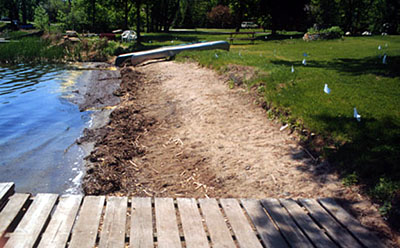
|
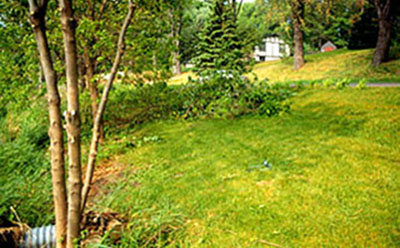
|
During Restoration
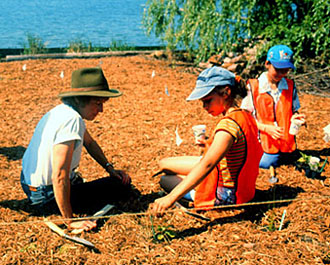
|
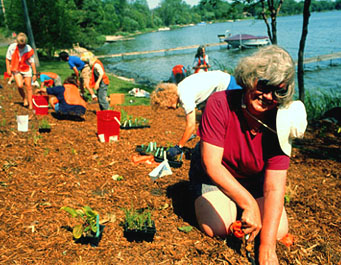
|
After Restoration
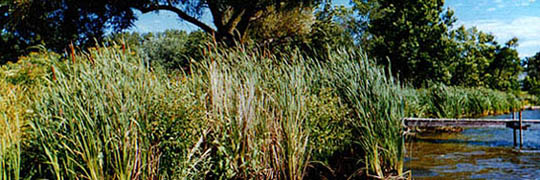
|
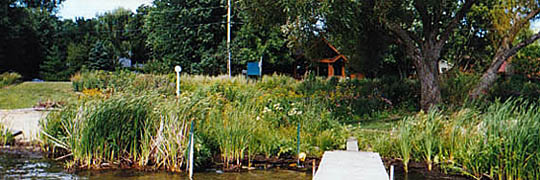
|